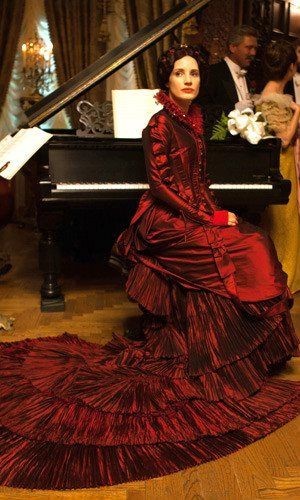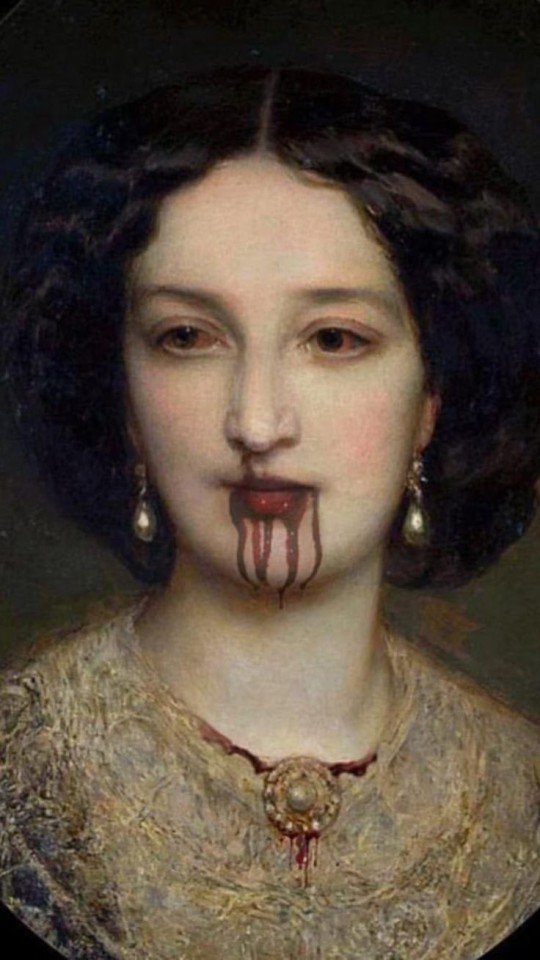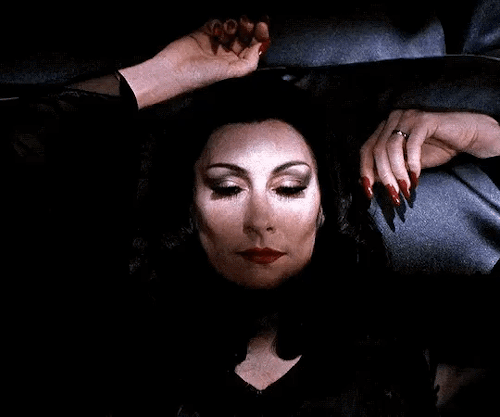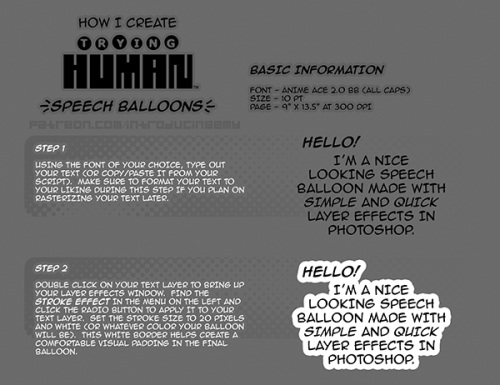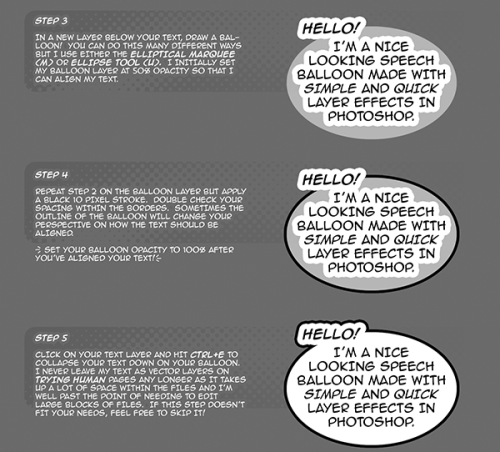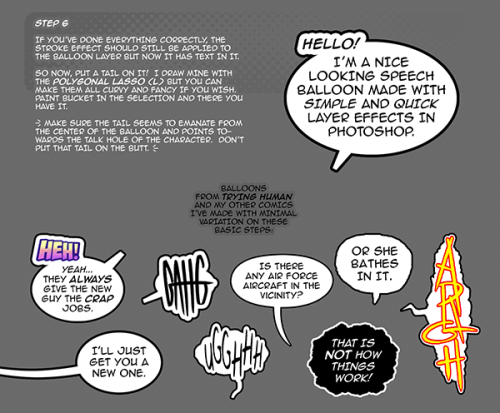Avoiding Ambiguous Brown Without Cultural Coding
Avoiding ambiguous brown without cultural coding
@ahivemindoftwelvecati asked:
How should I, a white person, avoid making characters fall into the vaguely brown stereotype in my fantasy books? I’m against coding cultures into this book, as I’m really trying to create a unique world (ironically by studying a lot of different cultures). By doing this though, am I doomed to remove characters from cultural context, or leave people wandering in vague color shades? Especially since some of my characters would fall into various indigenous ethnicities, but share nothing cultural
In an interesting way, I think the Star Wars novels kind of do an okay job about it (of course, others might differ, in which case I defer to them, but in my opinion they pull off something similar). For context, it all takes place in a galaxy where absolutely none of Earth’s cultures are present, but there are still human beings that are Latine-coded, Black-coded, etc, and they accomplish this through very simple descriptions of character appearances. For example, there was a Black-coded woman and her description ran something along the lines of “She had dark, rich brown skin and her hair was curled tightly, pulled back into a bun. She hated the moist heat of the swamp planet, but she had to admit her hair never looked better.” Through that, the audience understands that she’s most likely Black-coded (dark skin+tight curls), but they avoid cultural points (also the little detail of humid heat being great for curls is just a cute lil extra IMO, that’s something I hear people with 3- or 4-type hair saying a lot).
The pitfall here is that, since there’s no cultures analogous to what we have here in our world, each reader will have different interpretations of what each character might identify as ethnically. Who someone might headcanon as Korean, another might headcanon as Chinese, etc. That’s something you have to figure out for yourself if you’re okay with having–just that vague sense of ‘ah, this person must be from this vague region of the world’–or if you want to be more explicit.
–Sophia
So… to expand on the point Sophia put out that it’s up to the reader to determine what race somebody “really” is and how that’s a problem.
One of my best friends is mixed Japanese/white. Thanks to genetic roulette, they get approached by various Indigenous peoples asking what nation they’re from, because they look really Indigenous.
I’m mixed Mohawk/Mi’kmaq/white. Thanks to genetic roulette, nobody can tell where I’m from and I’ve gotten everything from West Asian, North Indian, and Great Lakes Native (basically, anywhere that golden-tanned skin + dark hair + no monolid is considered normative, I could pass for there)
My mom, meanwhile, looks very, very Mexican, despite being the same mixes as me at a higher percentage Native; she tans more pink/red and tans darker than I do. She also has a totally different face shape than I do.
Aka, there are dozens upon dozens of groups that look interchangeable, and the only thing that separates us is our culture.
When you’re dealing with more “obvious” features like type 4 hair, monolids, very dark skin, very pale skin, and those stereotypical things, yeah, you can usually peg down a general region. You’re basically only going to have Black people with kinky, delicate hair (but, are they African, Australian Indigenous, or Black Native? Because Australian Aboriginals are also very dark skinned and have a similar hair texture; Black Natives sometimes inherit the level 4 hair texture). You’re basically only going to have Northern settled peoples with white skin (barring albinism/vitiligo) but are they Norwegian or Sami?
What happens to all the people who are ambiguous in real life?
The trope has a basis in reality. Humans would like to think that a certain set of features = obviously from this place, but as soon as you expand your sample size beyond models, movie stars, and idealized art, you find that people look really different and you absolutely cannot rely on this logic.
It’s even a known fact among the modelling industry that anyone vaguely not-white who looks like they could maybe belong to any other group of brown people is put in for casting calls for that group, even if they’re not part of that group. It’s messed up, but it happens all the time. A Latine person could be put in as Arab, and an Ojibwe person can be put in as Filipino.
Culture is the thing that separates these people in real life. So as soon as you take that culture away, you’ve essentially lost any representation you could get. You’ll get diversity, yes, but it will not be representation.
Sure, you perhaps gain some representation as people look at parts of their culture that might be incorporated (maybe by accident, maybe on purpose) and say “hey, that’s us!”
But you’ve also strewn infighting by having perhaps multiple groups be able to say the same thing, and these multiple groups could very well share a lot of phenotypic traits, so suddenly you’ve represented nobody because you haven’t put anything solid that would sway the needle one way or the other.
If you start to assume too much that features = obviously this person is from x part of the world, then you really ignore a whole lot of human migration, diffusion, and people who just lived in really similar biomes so their physical features, skin tone, and hair type ended up being the same just purely because that had the best chance of surviving the region, or had no reason to change.
Diversity exists because of the environment. Skin tone, hair type, jaw shape, etc exist because of the food available, how it was grown/gathered (horticulture and “hunter-gathering” vs agriculture), the way food was eaten, the amount of sunlight, and the vitamins available in diet. This happened over tens of thousands of years.
But also, certain environments produced very similar coping strategies. There are only so many ways to survive a very hot desert, so unless you’ve really messed with the natural world in fantasy, you’re going to end up pulling from earth’s coping strategies for the very hot desert. Which means you could end up being kinda hurtful towards desert peoples who see their clothing and food growing ways used, with people who look like them because skin tone is environmental, but hardly anything else about their culture was taken.
Especially for Indigenous peoples, culture and land protection is what makes us Indigenous. How are you going to show us in your work unless you dig into our cultural principles (land protection) at the very least? Nothing about our facial features or skin tone are particularly unique to us, and assuming they are is how you get caricatures. There are Black Natives* to white Natives to mixed cultures with European and Indigenous practices (Metis) and everything in between. And that’s just North America’s range.
This isn’t even counting how there are Indigenous people everywhere, so when you say “Indigenous” do you mean the Mohawk? The San? Mbororo? Ainu? Sami? Samoan? There are literally thousands of groups that are primarily separated from the dominant group because of their way of life and maybe some subtle phenotyping. But primarily, they are separated by their culture.
I would suggest, at the very least, to have some degree of basic cultural beliefs to help differentiate groups of brown people who would otherwise be interchangeable. Land stewardship and using every part of the natural world for Indigenous groups, for example. You can’t really find Indigenous groups without that, so if it was missing I would raise an eyebrow.
Distinct foodstuffs and diets are another way to differentiate and code; you know that this group that uses chickpeas, sorghum, barley, and wheat is probably from West Asia, and that group that eats rice at every meal is probably somewhere from East Asia. Food is a very fast way to differentiate between groups, because even far-reaching staples are fairly different across cultures.
You don’t have to 1 to 1 code a culture. But for actually differentiating between people, you’re going to need more than one point of reference beyond looks. Food, nomad status (as in, settled vs nomadic vs hybrid), basic religious practices (monotheist vs pantheist), and broad-reaching cultural attitudes (collectivism vs individualism, who you’re expected to be collectivist with) are all points that help break apart these groups and let them know you see them.
It’s important to note that even if you do fantasy, it’s read in the real world. It’s read by humans, who are pattern recognizing machines. We will see patterns. Niki points out ways to try and avoid this patterning below, but it’s going to happen regardless.
It’s up to you what you actually want, out of not overtly coding anyone.
~ Mod Lesya
*Black Natives and cultural practice is a fraught topic (mostly because of slave-owning tribes) that is mostly summed up as: Black Natives are often barred from tribal participation because anti-Blackness is rife within North American Indigenous communities, but they have been tending the land just as much as if not more than their former enslavers; as such, they are members of the cultures/nations and should be recognized. They have been part of the land as North American Indigenous peoples for centuries, at this point, and the fact there is still enough anti-Blackness in Native communities that Reservation Dogs used nothing but Black caricature is… a problem to say the least.
This isn’t counting mixed Black/Natives who had their Native parent/grandparent cast out for marrying someone Black, who were raised in cultural practices without community ties because of anti-Blackness, who should also be recognized. If it’s valid to mix white culture with North American practices, it’s valid to mix Black culture (Black American and/or African Indigenous) with North American practices.
Do you want diversity or do you want representation?
Lesya raises a very important point that I encourage you to really think about. Why do you want to have diversity in your fantasy worldbuilding? Is it because you want your readers to feel seen and represented? Or is it because you want your fantasy world to feel well-rounded and realistic? These are two different motivations, which will require different approaches.
If you want representation, then go back and reread Lesya’s answer. Representation that’s only skin-deep isn’t really representation, and won’t help your readers feel seen. If, however, you want diversity for diversity’s sake–because diversity is realistic, and because it’s simply good writing to include it–then I have some more thoughts to offer.
In my opinion, there’s nothing wrong with creating a fantasy world that has fictional diversity that doesn’t directly parallel real-life groups and cultures, as long as you’re aware that that’s what you’re doing. This is arguably very common in high fantasy, though the effectiveness with which it’s executed varies wildly from author to author. N. K. Jemisin describes what she did for the Broken Earth trilogy in this blog post.
Unless you’re working with a very small subsection of the world (and even then–everything’s connected), diversity is natural, because people will be living in different geographical areas that each have their own climate, fauna and flora, which will shape both their physical appearance and their way of life. Thinking about the physical environment is a good starting point for figuring out what your population groups will look like and how they’ll behave.
But as Lesya pointed out, it’s very easy, when doing this, to inadvertently re-create elements of coding that will remind your readers of real-world groups, even if that wasn’t your intent. If that happens, you’ll have two options:
1) Very deliberately alter the coding to make it clear that you’re not trying to represent a certain real-world group (in the post I linked above, Jemisin talks about what she did to avoid appropriating Maori culture), or
2) Embrace it and go the representation route after all, which will entail a lot of research and care to make sure your coding makes sense, is respectful, and doesn’t reinforce harmful stereotypes.
Assuming you’re going with option 1, there are still more issues to be mindful of. We said before that representation that doesn’t include culture isn’t really representation. Here’s the thing: This is also true of fictional diversity. Even if your fantasy cultures are entirely created from scratch, they still need to exist, and be distinct and thoughtfully portrayed, in order for your world to feel well-rounded and realistic.
Diversity is more than physical appearance
As Lesya demonstrated, physical appearance alone isn’t enough to make groups of people distinct from another. In order to avoid the “ambiguous brown” trope you’re worried about, you will need to give your different groups of people distinct cultures.
There might be some cases where it would make sense for an entire fantasy world to have a single, homogenous culture, within which people of various ethnic backgrounds exist, resulting in a variety of physical appearances but everyone sharing the same culture. But if you’re planning to do this, you need to give a lot of thought to why things came to be this way. If an entire world is made up of a single culture, that usually indicates something very traumatic happened on a large scale. Maybe an apocalypse, or massive amounts of forced assimiliation or genocide. I don’t recommend going that route unless you’re willing to grapple with all the trauma that entails, and all the potentially problematic implications. You’re much better off populating your world with a diversity of cultures. They don’t need to be coded based on real-world cultures, but they need to exist.
In my opinion, the main issue with “ambiguous brown” characters is that it makes it seem we’re all interchangeable. In real life, we’re not. Make sure that’s the case in your fantasy world, too. Craft your population groups so they’re distinct, each with their own history, culture, language, and traditions. Your worldbuilding needs to be deep enough to counteract the absence of parallels to real-life cultures. We need to be able to look at it and say, “okay, this is not representing me specifically, but it’s also not lumping me in with everyone else that vaguely looks like me.”
And don’t make the mistake of thinking one skin tone = one group. That’s not true in real life, and it shouldn’t be in fantasy either. Using skin color and a handful of stereotypical features as shorthand for ethnicity or culture is not only shallow worldbuilding, it also feeds into the racist pseudoscience that sorts people into four or five neat color-coded boxes and collapses the world’s diversity into a handful of supposedly biologically determined races. If you’re creating cultures from scratch, this is your chance to challenge those ideas and populate your cultures with people who don’t all look the same. Within a single group, you can have characters with a variety of skin tones, hair texture, eye color, height and build, etc. Because this is what happens in the real world. Some groups include a lot more diversity than others, but variation exists everywhere.
This will partly depend on how interconnected your world is, and how much interaction exists between your various groups. More interaction and exchange tends to lead to a wider range of physical characteristics within each group, and it also results in similar features being found in multiple groups. Think about how that might play out in your fantasy world, and make sure you’re being as specific as possible with your fictional cultures so that you don’t have to rely on physical appearance alone to distinguish your population groups from one another.
- Mod Niki
More Posts from Ladyforger and Others
"You must come with me, loving me, to death;









Or else hate me, and still come with me."
Joseph Sheridan Le Fanu's Carmilla 1872
A Guide to High Fantasy Worldbuilding
masterlist. main navigation.
@bluebxlle_writer on Instagram
1. Subgenre
One of the first things you need to establish in your story is the subgenre of the high fantasy story you'll be writing. But Azura, high fantasy is already a subgenre?? Yes, it is, but what type of high fantasy?
Different types of high fantasy will require different types of worldbuilding. For instance, dark fantasy needs horror elements and an eerie setting, while steampunk fantasy will have complex machinaries instead.
Here are some examples of high fantasy subgenres :
• Epic fantasy
• Steampunk fantasy
• Dark fantasy
• Medieval fantasy
• Heroic fantasy
• etc!
2. Magic system
Most high fantasy stories will have a magic system, so if you're planning to include one, you'll need to do loads of planning.
Who can or cannot use magic, and why is that? Is it inherited, learned, or both? Are there any taboos in using magic? Are magic users praised or feared? What's the limit of using magic? Are there any incantations or magical tools involved? There are countless questions to tackle while coming up with a magic system, so make sure you plot it in detail.
3. Culture
Where there's people, there's culture. Although it won't be too frequently mentioned, having certain cultures in your world will make your worldbuilding more realistic.
Are there religions? Do people worship God(s)? When are the holidays? Are there any unique traditions? What gestures are considered impolite? It's little things like these that bring your story to life.
4. Type of government
Naturally, your world will have a government system. Decide what yours will be. Republic? Monarchy? Democracy? Theocracy?
Your government should also reflect your time and location setting - maybe using an emperor or empress to reflect a more medieval timeline, and using a president for a more modern setting. If your world is going through a war, you can use a system governed by the military. I have a post about writing a fictional government, you can refer to it for more info!
5. Language
What language do the people in your WIP speak? Is it fictional or not? If your setting is in a single region, they'll probably have the same language, but if it's set in different parts of the world, it's only natural to have more than one language.
Different languages can also be used to indicate diversity. If you're wondering how to incorporate multiple languages in a single language book, try reading Six of Crows as a reference - it shows the contrast of people speaking in different languages perfectly, even though the book is only in English.
6. History
Having a history of your world will help you understand it better. Has there been any previous wars between nations or disputes between the government and civilians? Or has the land always been peaceful, for some reason?
A great way to record your world's history is to make a timeline of main events that affected the plot. I also suggest creating a history for your magic system - how magic was discovered and normalized.
A lit of people think that worldbuilding exists solely to make epic, sweeping fantasy worlds to quest across, but it can create smaller, softer, mundane worlds to inhabit too.
You can worldbuild a small village. You can worldbuild a bookshop. You can worldbuild a jail cell, or a wishing well, or a single-parent household.
Not every story wants a grand scope.



Lucerys Velaryon & Aemond Targaryen in 1.10 “The Black Queen”
Jack! I need urgent assistance!
Why the fuck is it so hard to make a realistic fictional language?!
I have literally scoured the deepest, darkest places of the internet to try and understand how to make my own fictional language that is important to story but I just don’t get it.
I have watched behind the scenes Star Trek, Game of Thrones, and Avatar to try and understand how they came up with such beautiful and articulate languages but once again, came up empty, it’s like trying to explain physics to a donkey AKA me.
Can you help me? And if you can, please explain it to me like I am a dumb toddler trying to learn how to write my name for the first time?
Oof. Now, there's many conlang guides out there, but they're all for people who actually like conlanging and I, dear reader, do not. I hate conlanging, I suck at it, and analytic grammar is a consistent foe of mine that I cannot beat. But, conlanging is one of the best ways to introduce a whole heaping helping of realism to your setting as well as getting you to really think about how said setting works as you need to figure out what would have an individual word and why. Now that'll make sense in a moment, I promise.
But first...
Jack's Quick 'n Dirty Guide To Conlangs For If You Hate Conlanging
Step One: sounds.
Sounds (ha!) easy right? Weeeeeell... yes and no. Now, the easy part is making the sounds, really. Just start babbling in a way that you want your conlang to sound like and get going! Sing a bit, put on whatever accent you want, really have some fun with it until it sounds right. You got that? Good, now note that down in plain text as best as you can. Do whatever makes sense to you, but make sure you know exactly how to pronounce the sound once you've annotated it so you can reproduce it later, trust me on this one. But now comes the hard part.
Step Two: IPA
If you don't know what IPA is, bless your heart you innocent soul, you're about to learn something that will make you lose a bit of innocence today. IPA stands for the International Phonetic Alphabet and it can annotate the exact pronunciation of any words in any language in the world. If you've ever had a dictionary in front of you and you see that little section underneath the word where it's written again but like, with upside down Es and symbols that look like æ and đ and even ɮ? Congrats, you know what IPA looks like. Now, this thing was designed by some very clever people with an eye for thoroughness but not for practicality. See, it can notate every pronunciation there is, but boy oh boy, will it not make that easy for you. Read up on it anyway, learn how to use it, pull out an afternoon for it, you're gonna need it. IPA Chart is a good website that will help you out here, it's an interactive version of the IPA alphabet with short pronunciation sound clips attached to each symbol. Done all that? Good. Now we get to the really bitchy part.
Step Three: notate every funny sound you made down in IPA
Yes, every single one. Pull up an excel spreadsheet, notate the plain text in one column, a pronunciation in the second, and leave a third open for later. Notate every single word as best as you can, and make sure to save your work. This is gonna be long work, this is gonna be tedious work, and it's gonna be necessary work. You won't like it, you won't have fun, but future you will thank you and you would do anything for that bitch so get notating until you get to
Step Four: What does anything even mean????
Finally, some fun again. Now we get to the part where you get to assign meaning to each sound you've produced. Remember how I advised you to sing a little song? Yeah? Excellent. A quick and easy way to get a bunch of words sorted is to write a roughly similar song in a language that does exist and one you preferably understand already, and use that as a "guide" of what each word is "supposed" to mean. Make your own rosetta stone! Give yourself a break, trust me, it's much easier this way. And don't be afraid to get creative. See one sound or syllable you used a lot? Great, that can be a pronoun or an article or something else that's often used in a language.
Example: I liked the word "ra" a lot, so that's the word for "I" in Karilaa. From there I picked a few other words I liked and roughly hashed out the following
Ra = I
Ta = You
Su = We
Vu = They
Easy, good, simple. I don't bother with gender because fuck gender, but if you want it, go for it champ, now's the time. And you know what else I noticed while doing this? I was using "ra" and "ta" a lot in the last syllables of words, so I figured out how tenses work in my language as well in one fell swoop and made them affixes to verbs.
Really, there are no rules, so make them up to suit whatever aesthetic you want your language to have, but make sure to write everything down. No exceptions. Everything has to be written down.
Step Five: Rinse and repeat
Congrats, you now have some basics of a language! You can basically use and reuse this recipe to get More Language of the language you already have and guess what! Now you already have some language so you won't have to start from scratch! It's like a sourdough starter! Now ain't that neat. Now, if you do this and keep meticulous notes like I told you to you'll essentially be building up your own dictionary as you go, ready to consult for all your future conlanging needs.
Now, is this how good conlangers do it? No! Hell no! Absolutely not! But I'm not a good conlanger, and if you want this guide, neither are you. I'm sorry, but I'd rather you hear it from me than them when they invoke J.R.R. Tolkien's ghost to roast you. This is a guide for people who want a conlang but suck at conlanging. This is a guide for people who can't do it all neat and according to the rules but need to brute force a bitch in order to get some practical results for immediate use.
Now go forth and create!
-
 missrosemari liked this · 1 week ago
missrosemari liked this · 1 week ago -
 cr4y0nn reblogged this · 2 weeks ago
cr4y0nn reblogged this · 2 weeks ago -
 hollyannelikesstuff reblogged this · 2 weeks ago
hollyannelikesstuff reblogged this · 2 weeks ago -
 whumpitywhumpwhump liked this · 2 weeks ago
whumpitywhumpwhump liked this · 2 weeks ago -
 queerfandommiscellany reblogged this · 2 weeks ago
queerfandommiscellany reblogged this · 2 weeks ago -
 queerfandommiscellany liked this · 2 weeks ago
queerfandommiscellany liked this · 2 weeks ago -
 bejeweldjellyfich liked this · 2 weeks ago
bejeweldjellyfich liked this · 2 weeks ago -
 herraustrono liked this · 3 weeks ago
herraustrono liked this · 3 weeks ago -
 nutiki liked this · 4 weeks ago
nutiki liked this · 4 weeks ago -
 magsowo liked this · 1 month ago
magsowo liked this · 1 month ago -
 mousicat reblogged this · 1 month ago
mousicat reblogged this · 1 month ago -
 mousicat liked this · 1 month ago
mousicat liked this · 1 month ago -
 kittysboba liked this · 1 month ago
kittysboba liked this · 1 month ago -
 vosempire liked this · 1 month ago
vosempire liked this · 1 month ago -
 snowthornegames reblogged this · 2 months ago
snowthornegames reblogged this · 2 months ago -
 snowthornegames liked this · 2 months ago
snowthornegames liked this · 2 months ago -
 wolfieolfie liked this · 2 months ago
wolfieolfie liked this · 2 months ago -
 teashirt505 liked this · 2 months ago
teashirt505 liked this · 2 months ago -
 dori-the-rwby-addict liked this · 3 months ago
dori-the-rwby-addict liked this · 3 months ago -
 sexremedies liked this · 3 months ago
sexremedies liked this · 3 months ago -
 spinogreen0iq liked this · 3 months ago
spinogreen0iq liked this · 3 months ago -
 coffeemilkgirl liked this · 4 months ago
coffeemilkgirl liked this · 4 months ago -
 figbythistle liked this · 4 months ago
figbythistle liked this · 4 months ago -
 goldendragonleaf liked this · 5 months ago
goldendragonleaf liked this · 5 months ago -
 nxbellion liked this · 5 months ago
nxbellion liked this · 5 months ago -
 nnnnguyen-blog liked this · 5 months ago
nnnnguyen-blog liked this · 5 months ago -
 lubilsi liked this · 7 months ago
lubilsi liked this · 7 months ago -
 jackler1o1o liked this · 7 months ago
jackler1o1o liked this · 7 months ago -
 tamarahtalkstv liked this · 9 months ago
tamarahtalkstv liked this · 9 months ago -
 roosterscorner liked this · 10 months ago
roosterscorner liked this · 10 months ago -
 rocketquince reblogged this · 10 months ago
rocketquince reblogged this · 10 months ago -
 rocketquince liked this · 10 months ago
rocketquince liked this · 10 months ago -
 cobbedupwebs liked this · 11 months ago
cobbedupwebs liked this · 11 months ago -
 inf0hazard liked this · 11 months ago
inf0hazard liked this · 11 months ago -
 traciannecan liked this · 1 year ago
traciannecan liked this · 1 year ago -
 mellowtreepost liked this · 1 year ago
mellowtreepost liked this · 1 year ago -
 pppp8768 liked this · 1 year ago
pppp8768 liked this · 1 year ago -
 writingwithme reblogged this · 1 year ago
writingwithme reblogged this · 1 year ago -
 cyrulen liked this · 1 year ago
cyrulen liked this · 1 year ago -
 homukyo liked this · 1 year ago
homukyo liked this · 1 year ago -
 pastrypuppy reblogged this · 1 year ago
pastrypuppy reblogged this · 1 year ago -
 thebibutterflyao3 liked this · 1 year ago
thebibutterflyao3 liked this · 1 year ago -
 ratsinmykitchen liked this · 1 year ago
ratsinmykitchen liked this · 1 year ago -
 thelonelywiz reblogged this · 1 year ago
thelonelywiz reblogged this · 1 year ago -
 thelonelywiz liked this · 1 year ago
thelonelywiz liked this · 1 year ago -
 evethetree liked this · 1 year ago
evethetree liked this · 1 year ago -
 bimboothefool liked this · 1 year ago
bimboothefool liked this · 1 year ago -
 iosonounapersonamiao liked this · 1 year ago
iosonounapersonamiao liked this · 1 year ago

Loid/Yor (SxF) fic writer. +20. Twitter: @forgersarchive. Ao3: LadyForger.
34 posts



